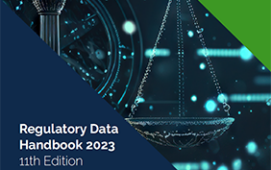It is no secret that Markets in Financial Instruments Directive II (MiFID II) remains a work in process, despite go live back in January. But what still needs to be done, how easy will it be, and how can firms work towards accruing the benefits of compliance?
A recent A-Team Group webinar, MiFID II Revisited, discussed ongoing issues of implementation, including problems around interpretation, data sourcing, reporting, transparency, and the European Securities and Markets Authority’s (ESMA) Financial Instruments Reference Data System (FIRDS). It also touched on the benefits of compliance.
The webinar was moderated by A-Team editor Sarah Underwood, and joined by Beate Born, global MiFID II trading project lead at UBS; Olivier Rose, head of projects and international data management at Société Générale Securities Services; Matthew Luff, director at QuA Vodis; and John Mason, global head, regulatory and market structure propositions in the Financial and Risk Division at Thomson Reuters.
An early poll of the webinar audience questioned the most challenging aspect of MiFID II delivery. Some 45% of respondents said interpreting the regulatory requirements, 38% noted sourcing, mapping and integrating MiFID II data, 8% late changes to the regulation made by ESMA, and 8% testing and integrating with Approved Publication Arrangements (APAs) and Approved Reporting Mechanisms (ARMs). A lucky 2% said they did not face any challenges.
Commenting on the interpretation problem, Mason said the consequences of an interpretive approach to MiFID II implementation created inconsistency. He exampled two APAs making different interpretations of requirements, which would result in different trade reporting, perhaps based on different data quality metrics or timeliness, and push both results into the MiFID II transparency regime.
On challenges around data sourcing, mapping and integration, Rose noted that all firms had ‘integrated something’, but now need to focus on where they are sourcing data from, whether it is correct and working for them, and whether it meets their expectations. He highlighted the arrival of the Legal Entity Identifier (LEI) as a mandatory addition to MiFID II reporting next month, saying: “The LEI is a major issue. Sourcing LEIs for the first time is relatively easy, renewing them is a nightmare.”
Discussing APAs and ARMs, Born said reporting to these devices is not working particularly well at the moment, but suggested data quality will improve over coming months and ease reporting problems. Luff noted many buy-side firms moving to the assisted reporting model, which allows them to use third parties to support regulatory reporting. He also identified problems with accurate counterparty matching in transaction reporting and said this may need to be resolved by intervention from ESMA.
The speakers agreed that the early months of MiFID II are not delivering expected levels of consistent transparency, an issue that firms can address by improving adoption of standards and regulators are more than likely to revisit.
ESMA’s FIRDS remains something of a dilemma, with the regulator saying it is not a source of golden reference data, but firms using it as such because there are no other ways to source the data. Mason pointed out that regulators have not previously been part of firms’ operational workflows and said that, in this instance, FIRDS is not working as well and needs improvement around data consistency and timeliness of publication to support effective trade and transaction reporting.
While there is much still to do to ensure sustainable MiFID II solutions, compliance does bring benefits, including business opportunities based on datasets created by the regulation’s requirements.
Listen to a recording of the webinar to find out more about:
- Ongoing MiFID II challenges
- Best practice solutions
- New data generated by MiFID II
- Likelihood of a consolidated tape provider
- How to gain benefits from compliance
Subscribe to our newsletter




